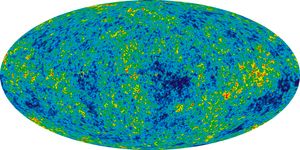Hubble Space Telescope Spots Farthest Star Ever Seen
Since its launch and deployment by the Space Shuttle Discovery in 1990, NASA’s Hubble Space Telescope has made over 1.5 million observations during its lifespan. While Hubble is nearing its end, soon to be replaced by the recently launched James Webb Space Telescope, it’s only fitting that this historic telescope that has captured the imaginations of millions around the world had to make one last major observation before leaving us for good.
Hubble has set a new benchmark by detecting the light of a star, Earendel, that existed within the first billion years after the universe’s birth in the big bang. This extraordinary discovery is the farthest individual star ever seen to date. The previous record, also set by Hubble, was detecting the light of a star when the universe was only 4 billion years old, so this new discovery won by approximately 3 billion years.
"We almost didn't believe it at first, it was so much farther than the previous most-distant, highest redshift star," said astronomer Brian Welch of the Johns Hopkins University in Baltimore, lead author of the paper describing the discovery, which was recently published in Nature. The discovery was made from data collected during Hubble's RELICS (Reionization Lensing Cluster Survey) program, led by co-author Dan Coe at the Space Telescope Science Institute (STScI), also in Baltimore.
"Normally at these distances, entire galaxies look like small smudges, with the light from millions of stars blending together," said Welch. "The galaxy hosting this star has been magnified and distorted by gravitational lensing into a long crescent that we named the Sunrise Arc."
The now-famous star’s named Earendel, which means "morning star" in Old English, is estimated by the research team to be at least 50 times the mass of our Sun and millions of times as bright, rivaling the most massive stars known. At this point, astronomers are not able to determine if Earendel is a binary star, though most massive stars have at least one smaller companion star.
Further confirmation of this monumental discovery will be made by the James Webb Space Telescope, whose high sensitivity to infrared light will be used to study Earendel in more detail.
As always, keep doing science & keep looking up!









